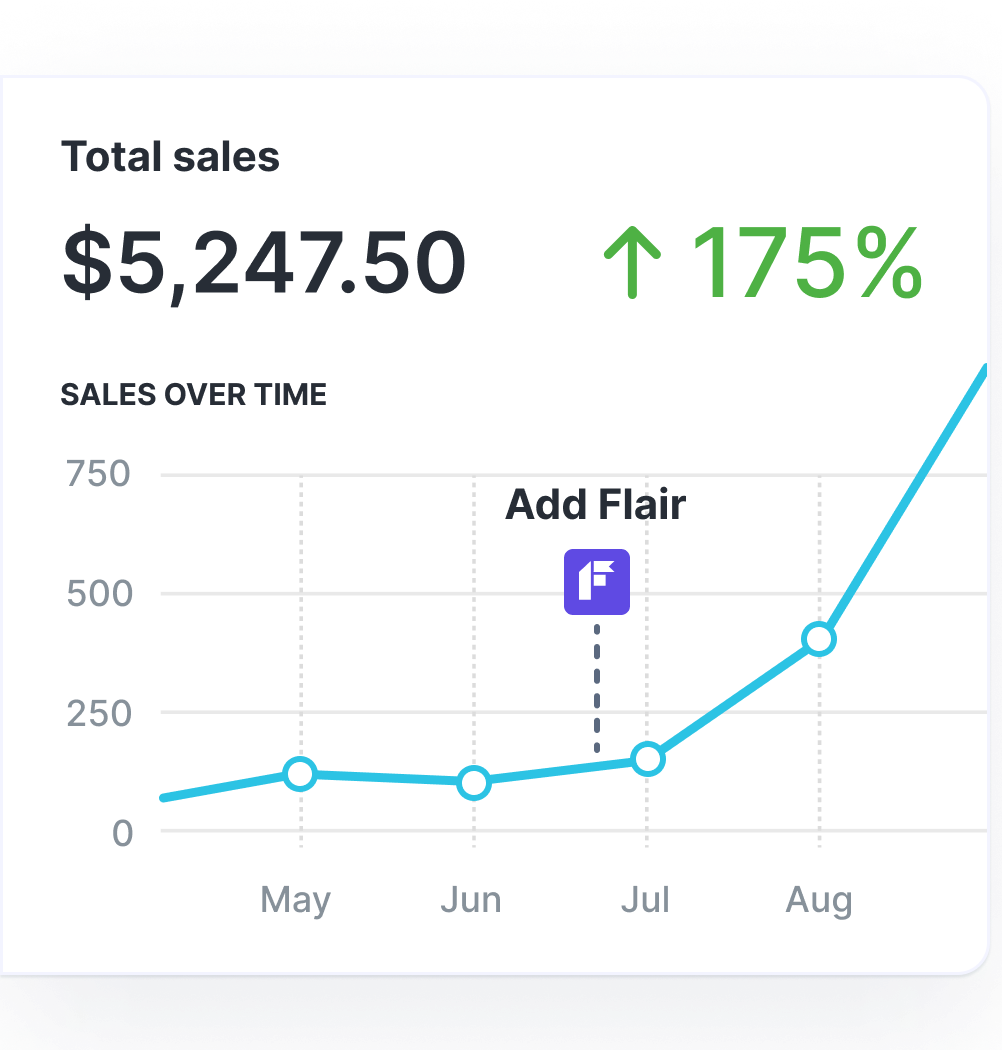Building Trust and Credibility: How to Effectively Use Shopify Customer Reviews

Whether you’re a tiny e-commerce startup or a global name, reviews play a crucial role in persuading consumers to buy from you.
Nine in 10 shoppers say they consider reviews before making a purchase decision, while three-quarters say reviews and ratings are a key way to learn about products they’ve never bought before.
They’re especially valuable for retailers with younger audiences, with 81% of Millennials and 87% of Gen-Zers actively seeking out websites with reviews:

But how, specifically, should you use reviews to boost your Shopify store’s trust and credibility? Why are they so effective? And how can you capture more reviews?
Read on for the answers to all those questions (and more)...
Why Collect and Share Customer Reviews?
The simple reason to capture customer reviews is that they make your store look good.
But let’s dig into the more specific benefits:
Increase Sales and Revenue
To be clear, reviews aren’t a “nice to have”. They’re vital to driving sales and revenue, with 98% of shoppers describing reviews as an essential resource when making purchase decisions.
Even more significantly, 45% of consumers refuse to buy products with no available reviews.

So if your Shopify store doesn’t have reviews, you risk putting off a ton of potential customers.
Add Trust Signals
Did you know that just 47% of brands are seen as trustworthy? That’s a big problem. Because if consumers don’t feel they can trust you, they’re unlikely to buy from you.
Unfortunately, it’s tough to change the mind of someone who thinks you’re untrustworthy — you can’t just tell them they’re wrong!
Once again, reviews are the perfect solution, with three-quarters of consumers saying customer-submitted reviews and testimonials are more credible than branded content.

So even if a potential customer has a bad feeling about your brand, you can still win them round by steering them toward your reviews.
Pro tip: Learn about more methods to make your store look more credible in our guide: 17 Ways To Create Trust on E-Commerce Sites.
Capture User-Generated Content
Reviews are one of the most common forms of user-generated content (UGC). And there are a whole bunch of reasons why you should be striving to capture as much UGC as possible.
Over four-fifths of consumers say they’d be more likely to buy from a brand if it shared more user-generated content as part of its marketing strategy. This is backed up by research that found conversion rates for people who interact with UGC are an astonishing 102.4% higher than the average website visitor.
So UGC doesn’t just help to convince people that you’re a credible, trustworthy brand — it also encourages people to buy.
Boost SEO Visibility
Enhanced search visibility is an underrated benefit of capturing and displaying customer reviews.
When you think about it, it all makes sense. Review content is naturally crammed full of juicy long-tail keywords, just like in this example from Benefit Cosmetics:

All of which helps your product pages show up in relevant search results, thereby boosting your organic traffic.
Reviews also give you the opportunity to add star ratings to product pages in SERPs, making your results more visible to searchers:

Which, in turn, makes them more likely to click through to your store.
How To Add Reviews To Your Shopify Store
Okay, so there’s a bunch of reasons why you’d want to display reviews on your Shopify store. But how do you start capturing your first reviews and showing them off on your website?
Essentially, it’s a two-step process:
- Choose one of the many Shopify-compatible review apps.
- Customize your product pages (and any other pages you want reviews to appear on) so your review content shows up.
Here’s how to make it happen:
Step #1: Choose a Third-Party Review App
First up, it’s time to pick your review app of choice.
You’ll notice how we’re using the words “third-party” here. That’s because Shopify has discontinued its dedicated review app, the appropriately named Shopify Reviews. So you’ll have to look elsewhere.
Fortunately, there’s no shortage of review apps. Here are some of the best:
| App Name | App Store Rating | Price |
| Judge.me | 5/5 (30k+ reviews) | $0 – $15 per month |
| Loox | 4.9/5 (19,800+ reviews) | $9.99 – $299.99 per month |
| Okendo | 4.8/5 (900+ reviews) | $0 – $119 per month |
| Stamped | 4.8/5 (6,300+ reviews) | $0 – $149 per month |
| Yotpo | 4.8/5 (6,900+ reviews) | $0 – $119 per month |
All are excellent apps, and all will let you add reviews to your store.
Of course, the higher-priced options offer more advanced functionality — for instance, Loox lets you sync reviews to Google Shopping and Meta Shops. So, decide which features you need then choose the best fit.
Pro tip: For more app ideas to grow your store, check out our guide: 15 Best Shopify Apps To Increase Sales.
Step #2: Edit Your Shopify Theme
That’s the easy part out of the way.
Now it’s time for the slightly trickier (but still pretty simple) part: configuring your Shopify theme to display reviews on all the desired pages.
Some review apps will do all this for you when you connect them to your store during the installation process. But, in case they don’t, here’s how to do it yourself:
- Log into your Shopify admin and navigate to Online Store > Themes.

- Find your current theme and click Customize to load Shopify’s theme editor.

- Click the drop-down menu marked Home page and choose Products > Default product.

- In the left-hand menu, click Add block.

- In the block menu, click Apps and select your product review app. Depending on your choice of app, there might be more than one option, so don’t be afraid to experiment to see what looks best.

- Optionally, drag and drop your review block in the left-hand menu to adjust where it appears on your product pages.

- Click Save when you’re satisfied with the results.
Repeat this process for any other page templates where you want to display reviews.
And that’s it! As soon as you start capturing reviews, they’ll automatically show up on the relevant pages.
8 Ways To Showcase Customer Reviews
Once you’ve gathered a bunch of glowing product reviews, it’s in your best interests to show them off. After all, when customers interact with review content, they’re more likely to buy.
Use these tactics to get as many eyes as possible on your reviews:
Add Reviews To Product Pages
Naturally, you want to display your reviews in the most relevant parts of your store. And the most obvious location is on product pages.
When a shopper arrives on a product page, they’re not guaranteed to buy, but they’re displaying clear interest. If you can convince them that the product in question meets their needs, there’s a much better chance they’ll buy.
Review scores and testimonials could be all the persuasion they need. Indeed, a study from Spiegel Research Center found that:
- The purchase likelihood for a product with five reviews is 270% greater than for products with zero reviews
- Reviews increase conversion rates for lower-priced products by 190% and higher-priced products by 380%

Which explains why merchants like Meow Meow Tweet display star ratings in a prominent position on product pages:

Feature Store Reviews on Your Homepage
But product pages aren’t the only place you should be displaying reviews.
Another option is to add review scores and testimonials to your homepage. This tactic is a good fit for subscription-based stores and merchants with small product ranges, like gardening subscription box brand Pot Gang:

That way, you start building trust in your product(s) the second someone lands on your store.
Add Star Ratings on Collection Pages
Another tactic is to display star ratings on your collection pages, just like interior decor marketplace Goodee does here:

Pro tip: For even better results, try combining this tactic with “trending” product badges to ensure your highest-reviewed products truly stand out on collection pages.
Share Success Stories on Your Blog
A simple star rating or one-sentence review might be enough to persuade shoppers to buy lower-priced or lower-stakes products. Like, if you’re buying new socks, you don’t need to read hundreds of words about them first — you just want to know they won’t fall apart after a couple of months.
But when there’s more incentive for shoppers to choose exactly the right product, you might need a more in-depth approach.
Take cat food. Pet parents want to know their kitty is getting all the nutrition they need, so they’re prepared to do some serious research before buying.
That’s why cat food delivery brand Smalls shares real-life customer success stories on its blog:

Pro tip: Consider offering some kind of incentive — like discount codes, store credit, or free product samples — in return for more in-depth, valuable customer testimonials.
Promote Reviews and Testimonials On Social Media
Reviews aren’t just about converting shoppers who have already landed on your website. They can also help bring more people to your store — you just need to share them in the right places.
One effective tactic is to publish your best reviews on social media, like in this example from coffee-maker brand Bruvi:
Pro tip: If you’re sharing reviews on Instagram or TikTok, don’t forget to steer your followers to the relevant product page via your link-in-bio tool.
Share Top Reviews in Email Newsletters
Email has the highest conversion rate of any B2C marketing channel…

…so it makes sense to share customer reviews and testimonials in your email newsletters.
Here’s an example of this tactic in action, courtesy of alternative milk brand Bored Cow:
Notice how they combine this glowing review with a money-off coupon, giving readers an extra incentive to buy? Smart stuff!
Use Reviews in Popups
Website popups are most often used for lead generation or to retain shoppers displaying exit intent.
But they’re also another valuable opportunity to point consumers toward your best products and provide social proof by sharing reviews and testimonials.
That’s precisely what Pressed Juicery does in this example:
Pro tip: Try adding popups like this to your homepage and collection pages to help shoppers find your top-rated products faster.
Highlight Top-Rated Products With Badges and Labels
Product badges complement customer reviews by steering shoppers toward your most popular, highest-rated products.
For example, you could add a “trending” or “best seller” badge to make these products look even more attractive:

On a busy collection page containing dozens of products, a badge like this will draw the eye and compel shoppers to click through to the relevant product page.
And the easier it is for customers to find your best products, the more likely they are to buy something.

Grow Your Shopify Sales by over 175% with Flair
-
Increase sales using product badges and sales banners
-
Maximize conversions with scarcity, urgency and countdown timers
-
Automate promotions with targeted rules and scheduling
6 Ways To Capture More Reviews
Think reviews are evergreen? Think again.
Unfortunately, three-quarters of consumers say their buying decisions are only influenced by reviews written within the past three months. Just one in 10 say the same about reviews published in the last year, while only one in 14 claim review recency doesn’t impact their decisions.

What does this tell us? That you need to generate a constant stream of fresh reviews.
With that in mind, here are six tried-and-trusted methods to capture more reviews and testimonials:
Send Review Request Emails After Delivery
The best time to request reviews is when the product is still fresh in the customer’s mind — AKA right after it’s been delivered.
Wait for a day or two after delivery so they’ve had the chance to get to grips with their new purchase. Then follow up with a review request email, just like this one from dog food brand Sundays:
Pro tip: Remember to add a CTA pointing customers toward your review platform or landing page. You’re asking them to do you a favor, so it’s in your best interests to make their life as easy as possible.
Ask for Reviews Via SMS
SMS marketing doesn’t typically convert as well as email marketing, but it does get noticed.
According to one survey, 73% of small and medium businesses see SMS open rates of 41%+. For context, the average open rate for email newsletters stands at 40.08%.

So it’s well worth requesting reviews via SMS, too — like in this example shared by Yotpo:
Pro tip: Not sure whether to send review requests via email or SMS? Do both! The more channels you use to reach your audience, the more likely they are to see (and respond to) your messaging.
Add Review Requests To Product Packaging
You don’t have to rely solely on digital tactics to capture reviews.
Increase your chances of success by adding review requests to physical product packaging, like in this example from kitchen appliance brand Oster:
Sure, it might increase your packaging costs.
But you can pretty much guarantee customers will see it. You can’t say the same for email or SMS.
Ask Your Social Media Followers
Your social media followers are at least somewhat interested in your brand and products.
Some will even have bought from you before.
So why not ask them to review their latest purchase?
Let’s look at how this process might work in practice, courtesy of male grooming brand Harry’s:
Take a page out of their book by asking your followers to name their favorite products — then reach out to people who respond and ask them for a full review or testimonial.
Offer an Incentive
Never forget that your customers are busy. Even if they love your brand, they might not want to spend their valuable free time reviewing your products.
That’s why it pays to offer some kind of incentive in return for reviews.
For example, skincare retailer Sephora rewards customers with loyalty points after they write a product review:

Pro tip: Looking to add a loyalty program to your store? Check out our guide on the Best Shopify Loyalty Apps.
Import Reviews From Other Platforms
Even if you’ve just launched your Shopify store, there’s an easy way to get hundreds of real customer reviews: just import them from other platforms.
That’s right — if you sell products that are also available via other sites and marketplaces, you can publish reviews from those third-party platforms on your own store. For example, Judge.me’s AliExpress Reviews app lets you import unlimited reviews from AliExpress.

(Of course, these third-party reviews aren’t as valuable as “real” reviews — so your ultimate goal should be to showcase your own review content as soon as possible.)
Alternatively, if you already have a bunch of your own reviews on platforms like Amazon and Etsy, there’s an app for that too. Just search Shopify’s App Store for the phrase “import reviews”.
FAQs
How do I add review stars on Shopify?
To add review stars to your Shopify store, you need to use a dedicated review app like:
- Judge.me
- Loox
- Okendo
- Stamped
- Yotpo
Once you’ve installed your chosen app, you can edit your Shopify theme so star ratings show up wherever you want them (like product pages and collection pages).
What happened to Shopify's product review app?
Shopify used to offer its own dedicated review app, named Product Reviews. As of September 5, 2023, the app has been sunset and delisted. But there’s a wide range of high-quality review apps available via the Shopify App Store.
What is the best way to get reviews from Shopify customers?
There are plenty of tactics Shopify merchants can use to capture more customer reviews. Popular options include:
- Sending review request emails after a product gets delivered
- Asking for reviews via SMS
- Offering customers an incentive (like loyalty points) in return for writing reviews
- Adding review requests to physical product packaging
- Asking social media followers to review your products











